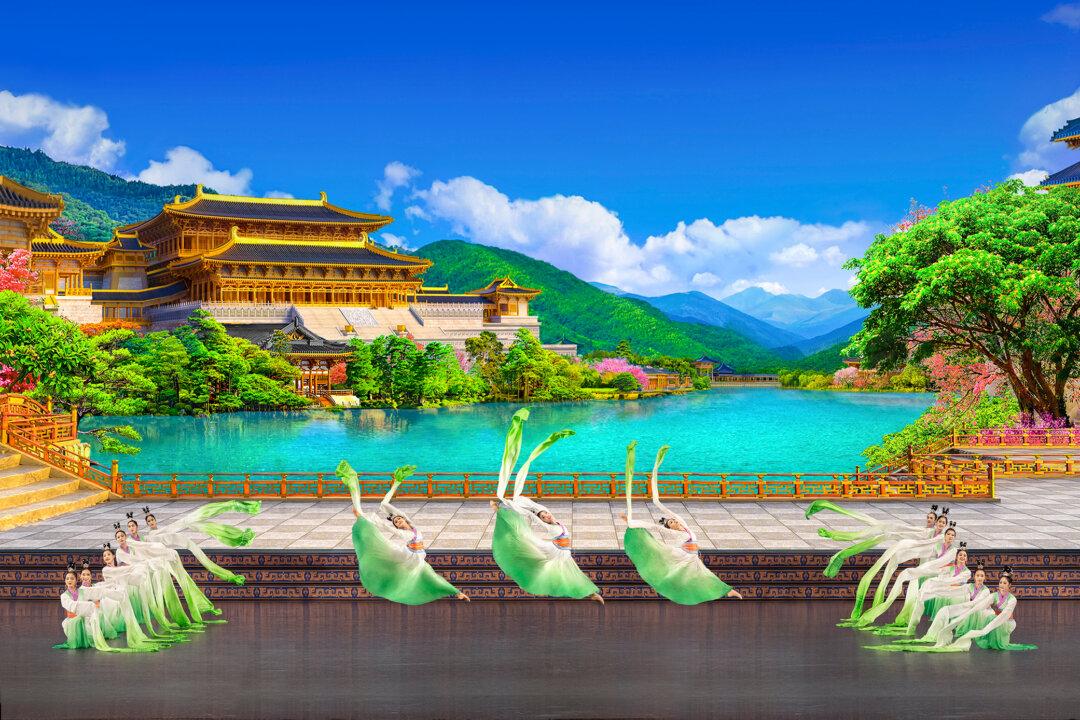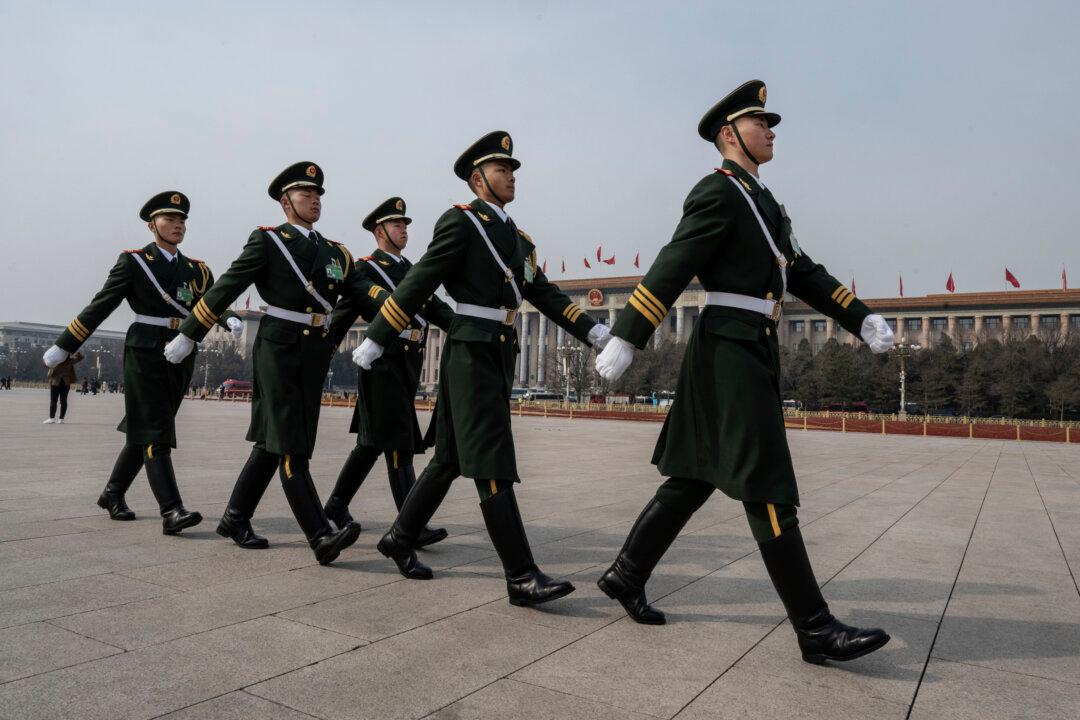Communist China conveniently forgets the U.S.-China alliance during World War II.
Americans in China
Americans have been visiting, living, working, trading, and proselytizing in China from the earliest days of the American republic. The proselytizing aspect was critical.Enter the Imperial Japanese Army
Japanese aggression in China began in the early 20th century as part of their plan to develop a “Greater East Asia Co-Prosperity Sphere” dominated by Imperial Japan. Japan invaded Manchuria in 1931 after the Mukden Incident. It is believed that Japanese army officers planted a bomb on a Japanese-owned railway in Mukden that precipitated the Japanese invasion.In short, the Japanese occupation of Manchuria pushed China and the United States together as de facto allies, setting the stage for an alliance during the coming world war.

World War II Allies
After the Imperial Japanese Navy attacked Pearl Harbor, the United States and China formed an official wartime alliance in 1942. The United States provided considerable material support to China throughout World War II, including through an extension of credits to the Chinese government and via direct military aid without strings attached–delivered through overland and air routes. A central supply line was provided via air over the Himalayas from India to China throughout the war to support Chiang Kai-shek’s Kuomintang-led Chinese Republic.According to U.S. General Claire Lee Chennault, the founder of the AVG: “The group had whipped the Japanese Air Force in more than 50 air battles without a single defeat. With the R.A.F., it had kept the port of Rangoon and the Burma Road open for 2 1/2 precious months while supplies trickled into China … [and] gave both Chinese and American morale an invaluable boost at a time when it was sagging dangerously low.”

The contribution made by the Chinese people in winning World War II in the Pacific is a largely untold story in the United States. The Chinese fought the Japanese army for eight long years, tying down and preventing the Japanese military from completing other operations, including the likely invasion of Australia and possibly even India. As the Russians fought the Nazis on the Eastern Front, the Chinese army inflicted large numbers of casualties on the Japanese during a bitter war of attrition that had racial overtones.
American Sentiment on V-J Day
A lifelong friend recently provided a laminated edition of The San Francisco Chronicle of Aug. 15, 1945. The articles were a remarkable journey back in time to help ascertain Americans’ emotions, issues, and opinions at that seminal moment in history—the day after V-J Day (Victory over Japan Day).- Multiple articles on Japan’s unconditional surrender, including the text of President Harry Truman’s announcement, and this quote from Japanese Emperor Hirohito: “We accept Potsdam. … I do not want to turn the country into scorched earth.”
- Japanese War Minister Korechika Anami committed suicide “to atone for his failure.”
- Truman announced that General Douglas MacArthur was named Supreme Allied Commander and would formally receive Japan’s surrender. MacArthur would later be instrumental in helping turn post-war Japan into a staunch U.S. ally.

- The U.S. monthly draft was cut from 80,000 to 50,000. Large military contracts were canceled, with the attendant fears of impending unemployment for thousands of workers (a significant national concern with memories of the Great Depression firmly in the minds of many Americans). Job controls were ended. Concern about future worker strikes was expressed in association with the “reconversion” of wartime to peacetime production.
- All U.S. censorship is to be ended. The U.S. government had an Office of Censorship during the war to preclude disclosing war-sensitive information that the enemy could exploit.
- Some bitter comments from men wounded in the war who were convalescing in U.S. hospitals: “Don’t write a tear-jerker about us, but right now I’d sure like to have that leg back. Just for a little while.” “I wish I could get happy like the rest of them.”
- A banner article describes the USS Indianapolis’ loss to a Japanese torpedo on July 30: “Down in 15 minutes” with the loss of over 1,000 men.
- The conviction of Marshal Henri Petain, the former head of Vichy France, for “crimes against France” and “collaboration with the Nazis.”
- On a secret trip to Russia, General Dwight Eisenhower visited a Soviet collective farm and said that it reminded him of his boyhood days in Kansas (he was being diplomatic, of course).
- Captured German documents detailed the duplicity of Swedish banking house Wallenberg (through Stockholm’s Enskilda bank) playing both sides during the war and accepting large commissions for safeguarding the stocks of German companies. (Consider this story in the context of the near-total financial sanctions on Russia; German business interests were not sanctioned by the Allies throughout World War II!)
- A long article summarizing the entire war in the Pacific that pulled no punches in describing atrocities and battles fought. As one example, the Hiroshima atomic bomb “was followed by a warning to ‘surrender or face annihilation.’”
- A comparison of the fighting styles and demeanor of the two 5-star flag and general officers in the Pacific: Douglas MacArthur and Chester Nimitz.
- A very interesting article highlighting the split between the Nationalist government in Chungking and Mao Zedong’s communist forces in north central China. General Chiang Kai-Shek was portrayed as a strong U.S. ally and the rightful head of the Chinese government, and the sacrifices of the Chinese people during the war were acknowledged. Meanwhile, the Chinese communists continued attacks on Japanese forces after the ceasefire was declared, with Mao ordering “the Eighth Route Army, the new Fourth Route Army, and the South China Anti-Japanese Brigade to attack Chinese positions in north China.” This willful violation of the ceasefire in pursuit of communist political objectives was the spark that ignited the Chinese civil war.
Conclusion
China and the United States were wartime allies during World War II, with America providing significant war material and logistics support to China from 1940 onward. Chinese forces bore the brunt of the land war in East Asia, suffering tragic losses, including millions of civilian deaths.The goodwill that existed between the Chinese and American peoples was destroyed after the Chinese communists consolidated control of China in 1949. That mutual goodwill can be restored with the demise of the Chinese Communist Party—a mutual goal for all moral people in the world.





